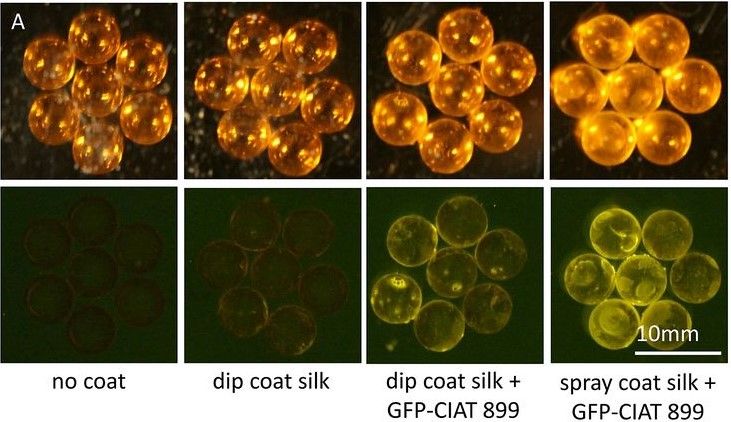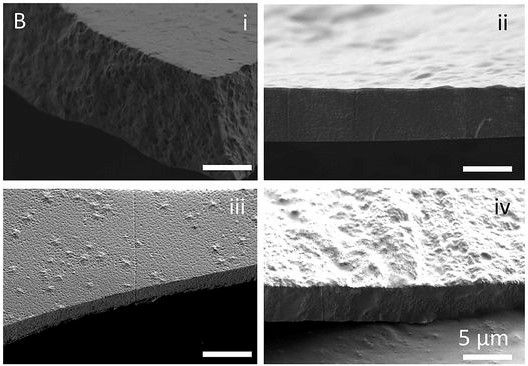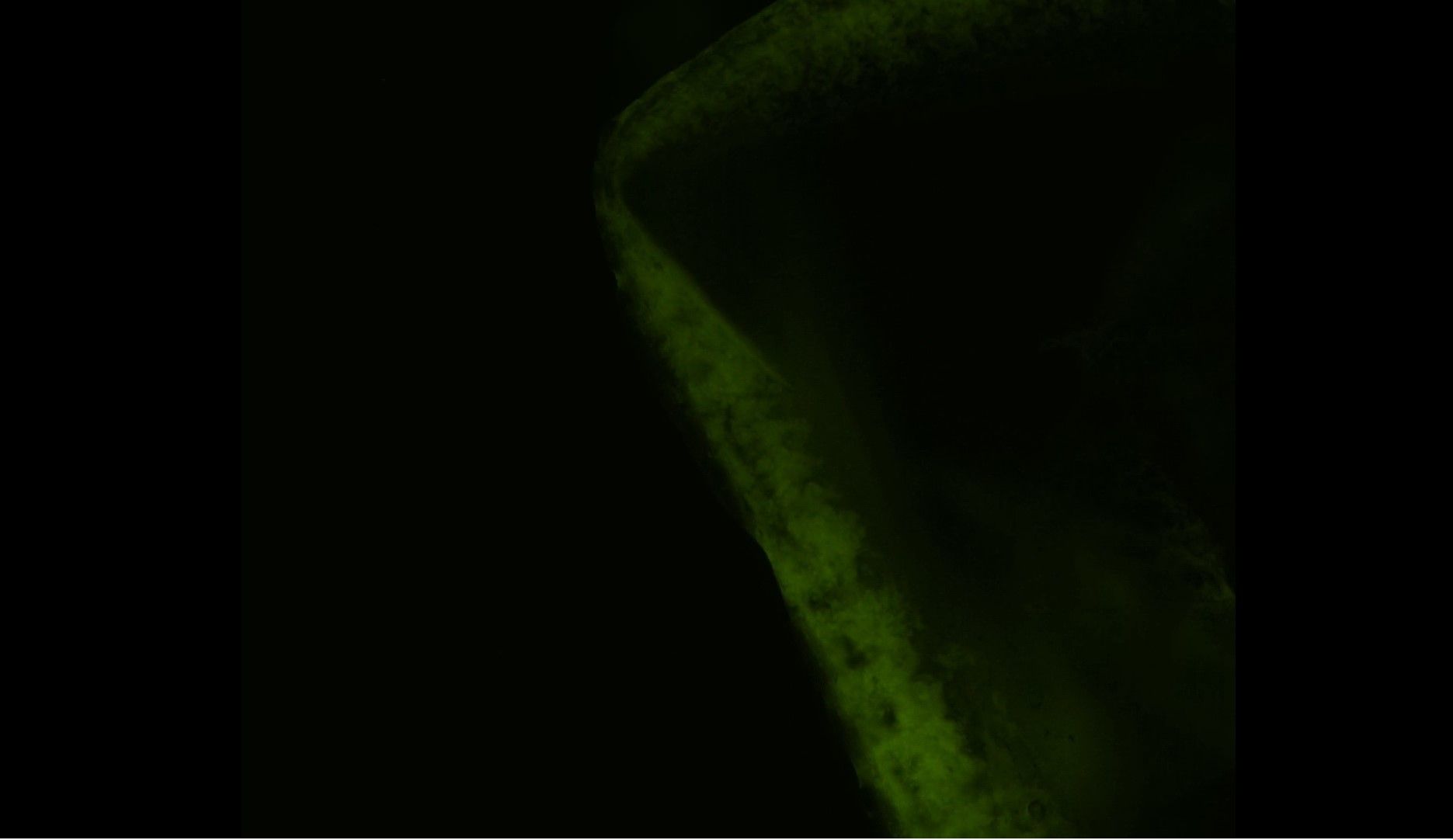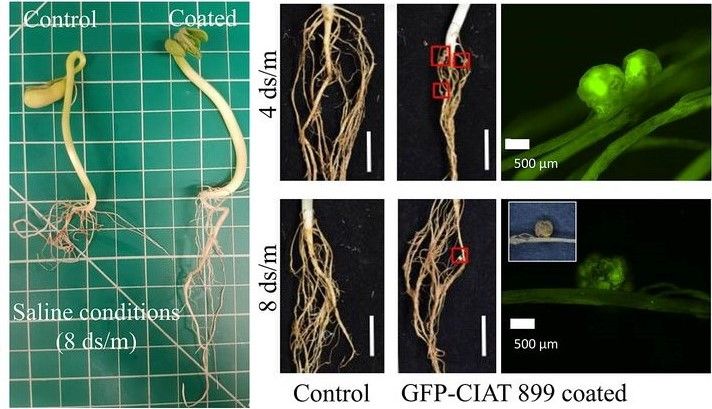A team from MIT have now found a way to make biofertilizer-coated seeds more durable by covering them with silk. Not only does this improve their properties for storage and transportation, but it also gives them the added bonus of making it possible to grow them in soils so salty that they were previously deemed not farmable.
To find out how this challenge began read: Silk-Coated Seeds Make Biofertilizers More Durable and Effective Part 1.
Unfortunately, the first test runs of this process were unable to preserve sufficient bacteria and they failed to thrive after returning to the soil.
Another breakthrough was needed, and, as MIT News reports, it arrived, “… when MIT graduate student Augustine Zvinavashe came up with the idea of adding a particular nutrient to the mix, a kind of sugar known as trehalose, which some organisms use to survive under low-water conditions. The silk, bacteria, and trehalose were all suspended in water, and the researchers simply soaked the seeds in the solution for a few seconds to produce an even coating.”

The seed is then wrapped in ordinary silk that is water soluble, so that as soon as it’s exposed to the soil, the bacteria are released.
This silk coat provides sufficient protection for both the seed and the microbes to survive storage and transportation, and then allows the seeds to germinate in soil with a salinity level that would normally stop them. “We see plants that grow in soil where otherwise nothing grows,” says Zvinavashe.

While the practice of coating each seed may sound implausible, the team is confident that it is economically viable. The coatings can be applied by either dipping or spray coating, both of which can be carried out at room temperature and ambient pressure. “The process is fast, easy, and it might be scalable,” says Zvinavashe. “The seeds can be simply dip-coated for a few seconds,” enough to produce a coating that is just a few micrometres thick.

The seeds have now been tested at both MIT and a research facility operated by the Mohammed VI Polytechnic University in Ben Guerir, Morocco. Both sites, “showed that the technique works very well,” says Zvinavashe.
Not only did the biofertilizer-coated seeds produce stronger, faster growing plants, than those from untreated seeds, but they also grew well in land that is currently deemed unsuitable for arable farming.
The study has just been published in the journal Proceedings of the National Academy of Sciences with the title, ‘A Bioinspired Approach to Engineer Seed Microenvironment to Boost Germination and Mitigate Soil Salinity’.
Here they explain how they have, “developed a biomaterial formulation capable of precisely coating seeds with biofertilizers and releasing them in the soil to boost seed germination and mitigate soil salinity. The bioinspired approach that we describe combines a disaccharide well known for its key role in anhydrobiosis with a structural protein that imparts mechanical robustness, ease of fabrication, adhesiveness, conformability, and controlled biodegradation.”
Adding that tests showed proved the method a practical approach to growing in salty soils. “Using Rhizobium tropici CIAT 899and Phaseolus vulgaris as working models, we demonstrated that rhizobacteria delivered in the soil after coating dissolution infect seedlings’ roots, form root nodules, enhance yield, boost germination, and mitigate soil salinity.”

You can watch the video on the PNAS website.
Most rhizobacteria live in soils where legume plants, such as peas and beans, are growing, so this research, like many others, has focused on beans. However, Marelli believes that there is a shift to get biofertilizers working for other plant types.
“There is a big push to extend the use of rhizobacteria to nonlegume crops,” says Marelli, and his team thinks that this may be a practical way to do it. “Our approach is almost agnostic to the kind of plant and bacteria.” Adding that it may also be possible, “to stabilize, encapsulate and deliver [the bacteria] to the soil, so it becomes more benign for germination [of other crop varieties].”

Work is now continuing to see if a modified silk coating could absorb enough moisture to allow for crops to grow in drought affected regions.
Meanwhile field tests are also being conducted to see how the biofertilizer coating performs in situ. If successful, the new coating could be a huge boost to poorer communities and those living in less fertile parts of the world. It will also help the expansion of the biofertilizer industry, lessening dependency on nitrogen fertilizers and thus reducing greenhouse gas emissions. All of which could add up to big changes in the agricultural industry.
As Marelli states, “Based on the excitement we saw with our collaboration in Morocco, this could be very impactful.”
